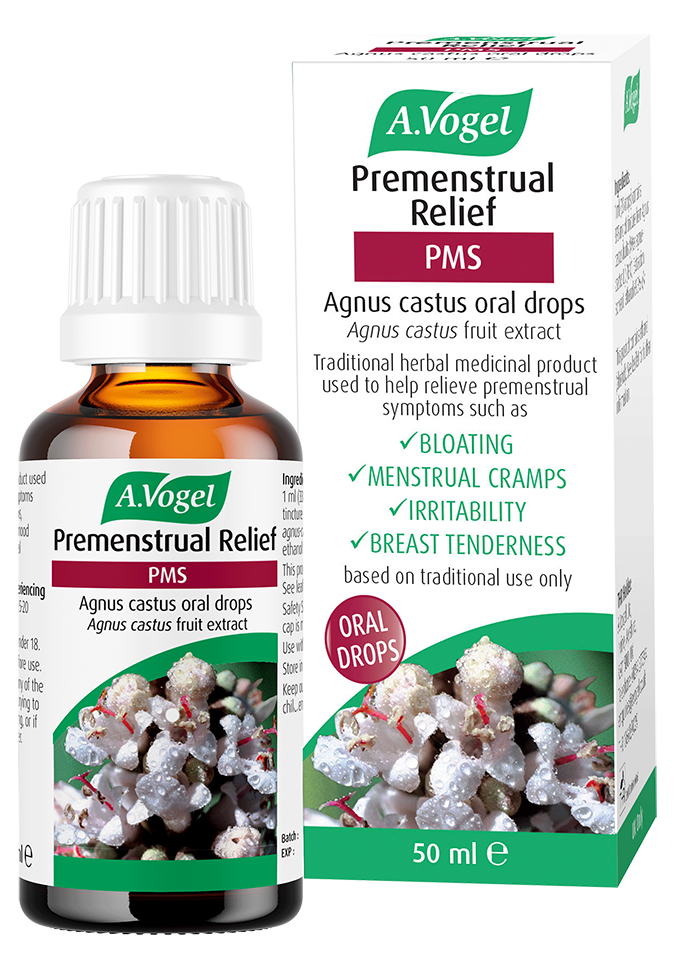PMS or PMDD, what’s the difference?
I’ve had a few emails from you lovely ladies out there on this subject, and a lot of women seem to think that PMS and PMDD are the same thing, just different acronyms: well ladies, I’m here to tell you that they’re not quite the same.
PMDD, or Premenstrual Dysphoric Disorder, affects around 3-5% of menstruating women, and is typically characterised by severe mood swings and physical symptoms that occur around their monthly cycle. In contrast, PMS, in some shape or form, is thought to affect up to 80% of women. Now, although the range of symptoms can be quite similar to those of PMDD, they don’t quite match up in terms of the severity.
Recognising the symptoms

Both PMS and PMDD share some common symptoms such as mood swings, tension, bloating and breast tenderness. Broadly, these symptoms can be split into emotional and physical symptoms as set out below:
| Emotional Symptoms | Physical symptoms |
| Mood Swings | Cramps |
| Fatigue | Muscle tension |
| Low mood | Bloating |
| Irritability | Breast tenderness |
| Confusion | Headaches |
| Lack of concentration | Heavy periods |
So, what is it that sets the two conditions apart? PMDD tends to come with symptoms so severe that they commonly interfere with work, social activities and relationships. This, in turn, can bring on even lower mood, and yet more feelings of sadness, despair, lethargy and irritability – which can seem like a never-ending, out of control, downward spiral.
You might also wonder if you experience some of the symptoms as mentioned above, does it necessarily mean you have PMS or PMDD? The timing of the symptoms is a common indicator. Symptoms tend to crop up when a woman’s period is due and or sometime in the week or two in the lead up to it.
Please also note that PMS or PMDD should be diagnosed by a doctor. They can help to rule out other causes such as psychiatric conditions, or conditions affecting the reproductive organs such as endometriosis, whilst also exploring any other obvious underlying contributing factors.
Is there a cause?
Although the cause of PMDD has not been clearly defined, theories suggest that it may be linked to levels and/or our response to certain hormones and neurotransmitters in the body:
Theory 1 – Hormone imbalance
We have two main female sex hormones in the body; oestrogen and progesterone. One theory exists that an imbalance in these hormones relative to one another may give rise to symptoms of PMS. There are a few different scenarios:
High oestrogen – The majority of PMS or PMDD cases are suspected to be driven by high oestrogen states. This hormone imbalance tends to give rise to many of the classic symptoms of PMS including, heavy, painful periods, irritability, breast tenderness and bloating.
Low oestrogen – Less common, but becoming more so nowadays, low oestrogen states may be more readily driven with the widespread use of hormonal contraceptives. Symptoms tend to include, longer menstrual cycles (time between periods), low mood and skin complaints.
High testosterone – Although high testosterone is the identifiable hormone imbalance, blood sugar dysregulation is suspected to be the driving factor in many cases. Conditions such as PCOS fall into this category and women may present with symptoms including excess body weight, excess facial hair, irregular menstrual cycles and fertility issues.
Theory 2 – Sensitivity to fluctuating hormones

A second theory exists that rather than balance of hormones in the body, it’s how we are reacting to them at a cellular level, which could be giving rise to symptoms.
Therefore, a woman with a regular cycle, but debilitating monthly symptoms, may benefit from additional nutrient support rather than directly influencing hormone levels.
Theory 3 – An imbalance in neurotransmitters
Research suggests that our sex hormones can directly affect neurotransmitters and that those women who suffer from PMS or PMDD may have defective serotenergic pathways.
Therefore, directly influencing serotonin levels (a chemical in the brain which is associated with controlling mood, attention and pain) may have a place in the treatment of PMS or PMDD. This may explain why anti-depressant medications may have some success in certain cases and/or if we’re able to influence sex hormones directly via conventional medications or herbs, this may be in turn, having an influence on serotonin levels. It is worth notong the recent research showing that antidepressants, especially SSRIs have been found to cause emotional blunting (1), antibiotic resistance (2) and a heightened risk of suicidality for young people in particular. (3)
These are thought to be some of the primary underlying causes when it comes to PMS or PMDD, please note that diet, lifestyle factors and use of medications may also have the ability to exacerbate symptoms.
Keeping a symptoms diary may help you to identify what other contributing factors may be at play.
Tuning into the treatments...
1. Dietary factors

Regardless of the suspected underlying cause, following a nutrient-rich diet is generally regarded as helpful advice in any case of PMS or PMDD. Generally, anti-inflammatory foods should help to manage some of the symptoms, whilst pro-inflammatory items, including lots of processed meat, refined sugar, excess dairy, alcohol or caffeine, could be contributing to trickier, monthly symptoms.
In my opinion, eating fresh is the key to avoid excess inflammation, but also to provide a steady dose of essential nutrients including magnesium, potassium, vitamin C or vitamin D.
Click to read my blog for more on the specifics when it comes to diet and PMS.
2. Lifestyle factors
There are a number of simple tips you can do from home that could help to manage monthly symptoms. Firstly, prioritise sleep. This helps your body to repair and replenish, but sleep also has a direct influence on your hormones. Firstly, lack of sleep can directly affect your blood sugar levels which can interfere with our sex hormone levels and could have a significant impact, especially if you suspect you suffer from a condition such as PCOS.
A lack of sleep may also interact with our neurotransmitters such as serotonin which we now know may also be having an important part to play in cases of PMS or PMDD.
Another important lifestyle factor to consider if you suffer at the hands of PMS or PMDD each month, is exercise. Now, this doesn’t need to be any extreme measures, but living a sedentary lifestyle could be giving rise to stagnation (efficient blood flow is helpful for a whole host of physical or emotional symptoms) and can also have a more direct affect on neurotransmitter levels.
So, get moving! Even moving a little more each day could have a significant impact on your health status in the long-run.
3. Where do herbs come in?
Which herbal remedy to choose really depends on your symptoms and the likely cause. PMDD is not something to treat by yourself – you will need medical guidance, whether through a doctor or a medical herbalist or both. Here is a quick guide to herbs for PMS:
- Agnus castus – Agnus castus may be helpful in cases of traditional PMS where heavy, frequent periods and symptoms such as irritability, bloating or breast tenderness are common features.
My Top Tip:If you need a little extra help to deal with painful periods or other symptoms of PMS then you may find Agnus castus useful. Take 15-20 drops in a little water twice daily. "Top-notch quality, this stuff is a life saver!" |
- Soy isoflavones – If low oestrogen is having a part to play (longer cycles are a sure sign) some gentle oestrogen support with a source of soy isoflavones may be helpful.
- Cinnamon – If wobbly blood sugar is at the root of the problem and likely to be knocking your hormones off, a daily dose of cinnamon can make a good addition to some positive diet and lifestyle changes.
- Kelp – If nutrient support is on your radar, then Kelp can make a helpful addition. Otherwise, adding more fresh foods or a more general multivitamin such as Balance Mineral Drink may be good options for you.
- St. John’s Wort – If low mood is a leading symptom and serotonin levels are suspected to be under par, St. John’s Wort may be a good choice. However, it’s best to check some hormone support wouldn’t be the primary call to action first, and please note this remedy isn’t suitable alongside any prescribed medications.
4. When is it time for conventional meds?
Diet, lifestyle and herbal remedies are often a good place to start to manage any condition, with PMS and PMDD included.
However, depending on the severity of your symptoms it might be time to head to the doctor. Being unable to work or live your life the way you’d like isn’t on and your doctor may be able to prescribe medications to help get the symptoms sufficiently under control initially.
Originally published on 15/10/14, updated on 23/4/19








